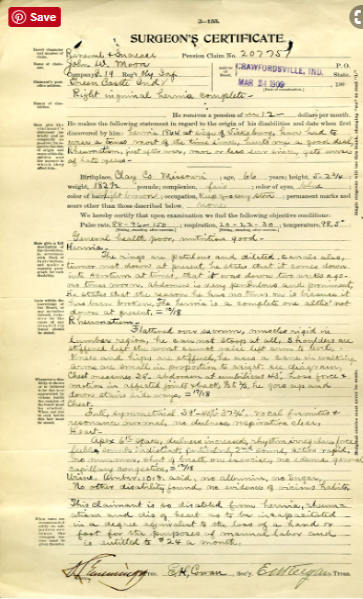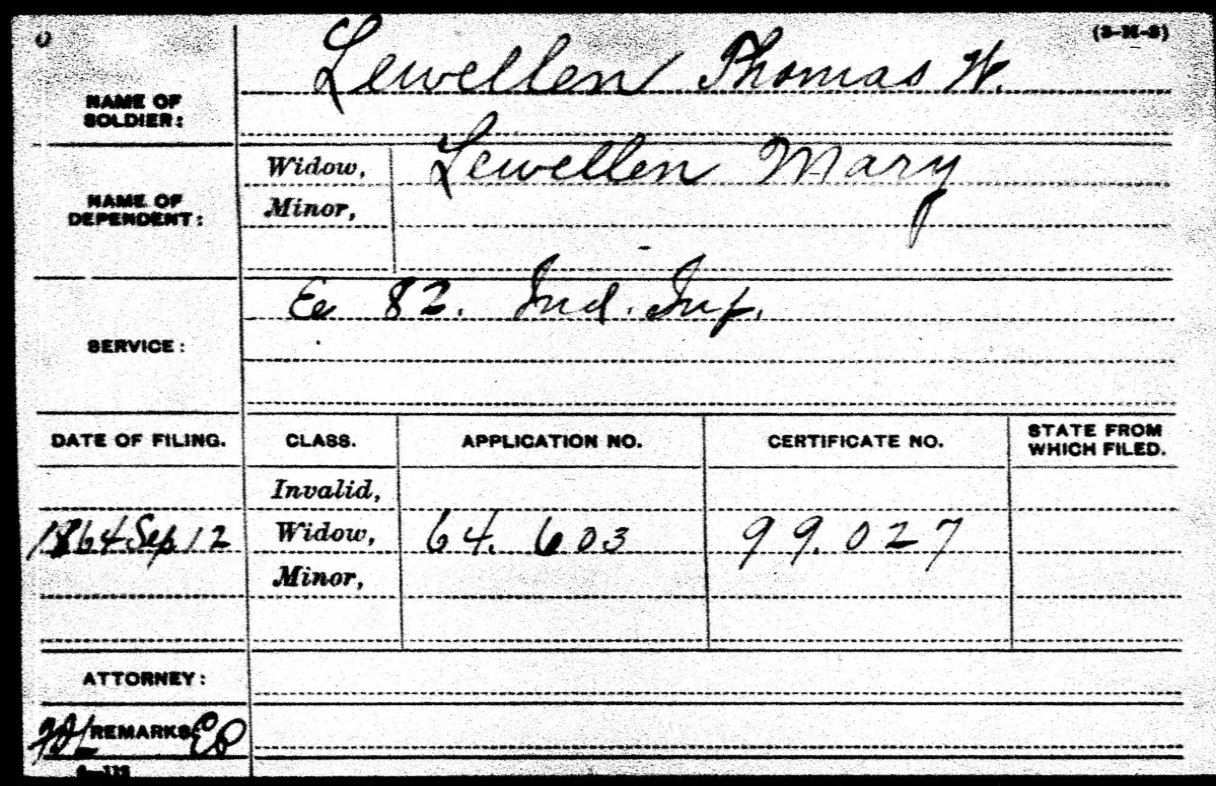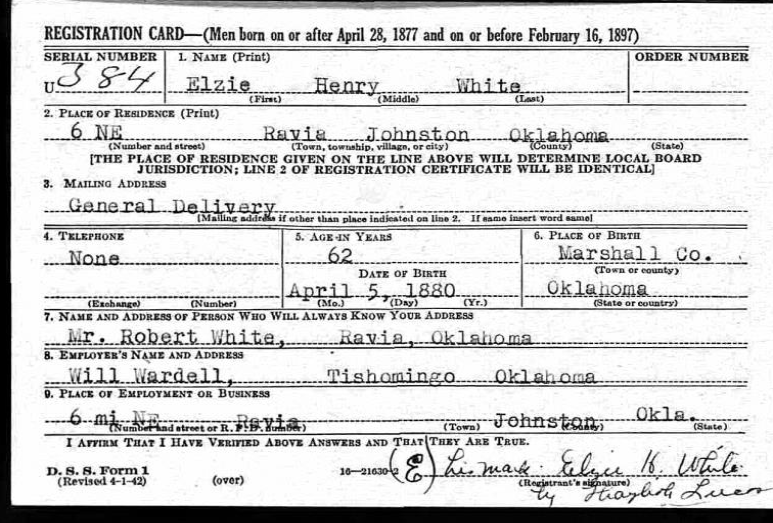Wondering how to look up military records for an ancestor that served in a U.S. conflict? These important records can contain unique insights into your family’s life, and even fill in the gaps when you are missing information in your tree. This quick guide will help you make sense of locating these one-of-a-kind collections online.
How to look up military records online
Military research can offer a great deal of information about your ancestor in uniform, as well as their family, and many of them can now be found online. If you haven’t yet taken the time to explore these important collections, now is the time.
Military records contain:
- Evidence of military or patriotic service
- The place of residence at time of military service
- And address at the time a pension is received
- Birth information for the soldier and their family
- Evidence of family relationships, such as a spouse or children
- Maiden names of wives
Military records are usually divided into two groups, those at the National Archives in Washington, DC and the military records in state archives, based on where your ancestor served. Many researchers make the mistake of searching only one and not find their ancestor because the needed records are at the other.
For example, the state archives of Alabama and Georgia have records of their soldiers through World War I that are not found elsewhere.
Any records earlier than the Revolutionary War should be sought in their respective state archives. Such records seldom produce any personal information, but they can be useful for locating people before the 1790 Federal census.
Military records can be broken into three basic categories
This article is an excerpt from the military research section in our Master Family History Course. For more lessons on this topic, and many others, register here.
Service Records. Service records were created at the time of the military conflict. They include enlistment records, discharge records, pay records, and information on whether a soldier was injured or killed while in the military.
Pensions. Pensions were offered to soldiers, and often to their widows and children, on the basis of military service. Pension records may include applications for pensions, statements made by doctors, records showing whether a pension was approved or rejected, appeals, letters from the pensioner, their spouse or their attorney, and records related to the death of the pensioner or widow. Pension files can be quite extensive. For the Civil War, they can number into the hundreds of pages.
Bounty Land. The government provided bounty land for those who served in the Revolutionary War, the War of 1812, the Mexican War, and so called Indian wars between 1775 and 1855. It was first offered as an incentive to induce citizens to serve in the military and later as a reward for service. Veterans were often offered 160 acres for their service. Often times, the veteran never settled on the land given to them, as it was usually far away from their home. Instead, the land would be sold to a speculator who then sold it on to settlers in that area.
Both the federal government and some state governments granted pensions or bounty land to officers, to disabled veterans, needy veterans, widows or orphans of veterans, and veterans who served a certain length of time. Pension records usually contain more genealogical information than service records. However, note that not every veteran received or applied for bounty land or a pension.
In a person’s pension application papers you may find his name (and sometimes his wife’s maiden name); rank; military unit; period of service; residence; age; date and place of birth, marriage, and death; and the nature of his disability or proof of need. To prove that he served in the military, he may have included documents such as affidavits from those with whom he served.
Widows or heirs had to prove their relationship to the veteran with marriage records and other documents. Files may also contain the names of dependent children under the age of 16.
Military Timeline: Where Do Your Ancestors Fit In?
- 1675 King Philip’s War – New England (3,000 soldiers)
- 1676 Bacon’s Rebellion – Virginia (500 soldiers, both sides)
- 1754-1763 French and Indian Wars (42,000 soldiers)
- 1775-1783 Revolutionary War (217,000 soldiers, aged 15-55)
- 1812-1815 War of 1812 (286,730 soldiers, aged 18-40)
- 1817-1898 Indian Wars (106,000 soldiers)
- 1846-1848 Mexican-American War (78,718 soldiers, aged 18-50)
- 1861-1865 Civil War (North: 2,213,363 soldiers. South: 1,050,000 soldiers, aged 16-60)
- 1898-1902 Spanish-American War (306,760 soldiers, aged 18-45)
- 1917-1918 World War I (4,734,991 soldiers, aged 18-45)
- 1941-1945 World War II (16,112,566 soldiers, aged 18-41)
- 1950-1953 Korean War (5,720,000 soldiers, )
- 1964-1975 Vietnam War (8,744,000 soldiers)
- 1990-1991 First Gulf War (2,322,000 soldiers)
There are some conflicts that are more likely to have produced records about your ancestors
Some wars affected more families than others and, thus, looking up military records for these conflicts can be a great way to locate information about your ancestors.
How to Look Up Military Records from the Revolutionary War
Fires in 1800 and 1814 destroyed almost all of the Federal military records related to the American Revolution. For thousands of soldiers and sailors, what remains of their records consists of vouchers, accounts, rolls, bounty land records etc. now in their respective state archives.
However, despite the destruction, records do remain, largely those related to military bounty land and pensions. These records were created after 1800. By the 1830s, for example, a major effort was under way in Congress to award pensions to all of the veterans and widows of veterans of the Revolution.
A typical pension record can contain the soldier’s place and date of birth (sometimes even his bible records); details of when and where he served and when he lived before and after the Revolution; the name of his wife; when and where he was married; names of friends and relatives; his place and date of death; and much more. So many claims were filed that often even claims made by brothers and cousins can contain information useful to a genealogist.
Revolutionary War bounty lands were given by the Continental Congress. In addition, nine individual states (Connecticut, Georgia, Maryland, Massachusetts, New York, North Carolina, Pennsylvania, South Carolina, and Virginia) also gave bounty lands to their respective soldiers. Those records are at the respective state archives. Find a list of places to search these online here.
In total, more than 550,000 veterans, widows, and families of orphans received Federal bounty land for military service prior to 1855. The National Archives has indexed all federal military bounty land claims and the Bureau of Land Management has placed land patents for military service on its web site.
Pension files also contain important information about veterans. A veteran’s pension application may include his age or date of birth, his residence, and sometimes his birthplace. Property schedules often give names and ages of a veteran’s wife and children.
The application of a widow seeking a pension or a bounty-land warrant may give her age, residence, maiden name, date and place of marriage, and the date and place of her husband’s death. In some widows’ pension application files is a copy of a marriage record from the town clerk, a clergyman, or a justice of the peace as proof of marriage. Sometimes family-record pages from Bibles and other books were also submitted by a widow as proof of marriage.
Revolutionary War pension files are among the easier types of federal records to use because they are arranged alphabetically by surname of the veteran. Within surnames, the files are arranged alphabetically by given name and then alphabetically by state of service.
As an example, here is an abstract from the pension file of John Potts, a soldier from South Carolina:
State of Georgia Cass County: On this the 12th day of February 1851 Personally appeared before me D. M. Hood an acting Judge of the Inferior court in & for said County, Mrs. Hannah Parmelia Potts, aged 90 years, a Resident of Cass County Georgia, who being sworn according to law, declares, That she is the widow of John Potts deceased, That her said husband was a soldier in the revolutionary war under the command of one Ridgeley, and Norrid (as well as she can Recollect) That he entered the Army while living in Lawrence district SC [sic, Laurens District South Carolina] — (does not recollect how long he served) that she was married to the said John Potts some time about the first of February 1777, that her said husband died in Cass County Georgia on the 22nd of March 1839, That she makes this declaration in order to obtain a pension under the proper wall, provided, in such cases, that she appoints J. G. Reavis of Cassville Georgia her agent, to ascertain, what law, to apply under & to ask of the Commissioner of Pensions his index or information & instructions, & whether she is not entitled under the act of July 4th, 1836. Sworn to and subscribed this day above written. S/ Hannah Parmelia Potts, X her mark
Revolutionary War pension files and bounty land records are both important for tracing the lives of military ancestors both during and after service. Start your search for pension files here and your search for bounty land records here. Both are free.
Finding Records for the War of 1812
Like the Revolutionary War, people who joined the militia and served in the army or navy during the War of 1812 were eligible both for pensions and bounty land. Throughout the 1800s, nearly 100,000 applications were submitted. Some were approved, some not, but files for both were preserved.
The pension files of the War of 1812 veterans total nearly 7.2 million pages. These are pages filled with information about these men and their families. It isn’t unusual to find pages from family Bibles, marriage records, and affidavits about family relationships.
Until recently, these pension records had never been microfilmed, even though they were among the most heavily used records at the National Archives. Through the efforts of genealogists across America, more than $3 million was raised to index and microfilm the War of 1812 records. They are now available free of charge through Fold3. More than 1.3 million records, or 82% of the collection, have been microfilmed already; the project is expected to be completed fairly soon.
Here is an excerpt of one record for Martha and John Rainwater:
State of Georgia, County of Green
On this twenty-first day of January A. D. eighteen hundred and fifty-one, personally appeared before me a Justice of the Peace within and for the county and state aforesaid, Martha Rainwater, aged 55 years, a resident of Green County in the State of Georgia, who being duly sworn according to law declares that she is the widow of John Rainwater deceased who was a Private in the company commanded by Captain Alexander Morehead (a volunteer company) in the Battalion commanded by Major John McMillan in the Second Regiment of South Carolina Volunteers commanded by Col. Reuben Nash in the War with the Creek Indians (in the British War) declared by the United States on the 18th of June 1812. That her said husband volunteered in Pendleton (now Anderson) District, South Carolina on or about the last of 1813 or the first of 1814 for the term of six months and continued in actual service in said war for the term of six months and was honorably discharged at Fort Hawkins Georgia about the first day of August 1814 having received a written discharge which was burnt with his dwelling in 1836. The fact of his honorable discharge will appear by the muster roll of said company.
She further states that she was married to the said John Rainwater in Pendleton District, South Carolina on the 14th day of March A. D. 1815 by M. Collins, a preacher, and that her name before her said marriage was Martha Adams and that her said husband died in Green County, Georgia on the 24th day of July A. D. 1836, and that she is still a widow, that if there be any record of her marriage she doesn’t know it unless it be in Pendleton District, South Carolina.
She makes this declaration for the purposes of obtaining the bounty land to which she may be entitled under the Act passed September 28th, 1850 and she hereby appoints Dr. D. Cooper her agent to obtain her Bounty Land Warrant.
Martha Rainwater
Sworn to and subscribed before me the day and year above written.
B. E. Spencer, J. P.
Looking for Civil War Records Online
Over 2.8 million men (and a few hundred women) served in the Union and Confederate armies during the Civil War. This section briefly describes resources for researching the military service of individual Civil War soldiers in “Volunteer” Army units.
For Union army soldiers, there are three major records in the National Archives and Records Administration (NARA) that provide information on military service:
- Compiled military service record (or CMSR);
- pension application file; and
- records reproduced in microfilm publication.
For Confederate Army soldiers, there are two major records in the NARA that provide information on military service:
- Compiled military service record (or CMSR) and
- records reproduced in microfilm publication.
Records relating to Confederate soldiers are typically less complete than those relating to Union soldiers because many Confederate records did not survive the war.
NARA does not have pension files for Confederate soldiers. Pensions were granted to Confederate veterans and their widows and minor children by the States of Alabama, Arkansas, Florida, Georgia, Kentucky, Louisiana, Mississippi, Missouri, North Carolina, Oklahoma, South Carolina, Tennessee, Texas, and Virginia; these records are in the state archives or equivalent agency.
Read more about how to access these records here.
Understanding What Records Are Available for World War I and World War II
Unfortunately, a devastating fire at a records facility in St. Louis in 1973 destroyed most Army and Air Force records related to World War I and II.
Figures are as follows:
- Army records from 1912 to 1960, 80% record loss
- Air Force records from 1947 to 1964, from surnames Hubbard onward, 75% record loss
No duplicate copies of the records that were destroyed in the fire were maintained, nor was a microfilm copy ever produced. There were no indexes created prior to the fire. In addition, millions of documents had been lent to the Department of Veterans Affairs before the fire occurred. Therefore, a complete listing of the records that were lost is not available.
However, there is one record group that has been preserved: Draft registration records for WWI and WWII exist and are available for search on FamilySearch and other locations. Although not nearly as extensive as a pension file, these records do show places of residence and ages, as well as a physical description of the person registering.
See the WWI draft registration cards can be found at no cost on FamilySearch.
Draft cards for WWII are more complicated. You can access the Old Man’s Draft, as it was called, free on FamilySearch. Ancestry offers an earlier draft of younger men with a paid subscription and Fold3 has records as well.
We encourage you to read the following help document from FamilySearch if you need more help with locating draft records for WWII – and don’t forget that you can find more help on how to look up military records, and many other topics, in Family History Daily’s online, self-paced courses.
Steve Freeman is a writer, editor and publisher with extensive experience in genealogical research and military record searches.




The title should be “How to Look Up Military Records About Your North American Ancestors” since it fails to covers all military records e.g. Boer War, Peninsula/Napoleonic Wars.
These articles are too US-centric for those researching European military records.
My husband’s uncle was killed at Iwo Jima on February 20, 1945 at age 19. He was never married, nor did he have children. There are now only 2 surviving nieces the children of his 2 brothers. We were denied access to his service records because we were not direct descendants.
Is there any way to get these records for the purpose of compiling a family genealogy/history.
No mention of the fire in the St. Louis records depository which made many World War II records unavailable. That’s the situation with my father’s service records during WWII.